20+ SAMPLE 30 Day Notice
-
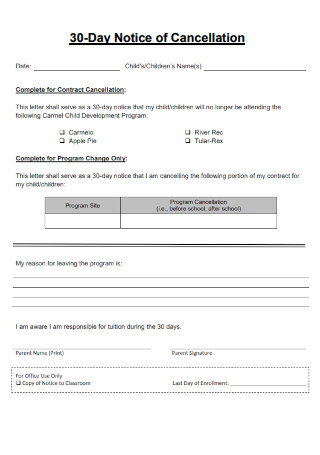
30 Day Notice of Cancellation
download now -
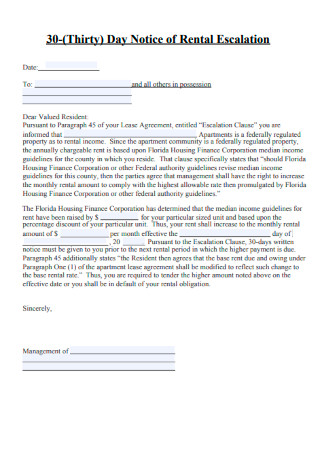
30 Day Notice of Rental Escalation
download now -
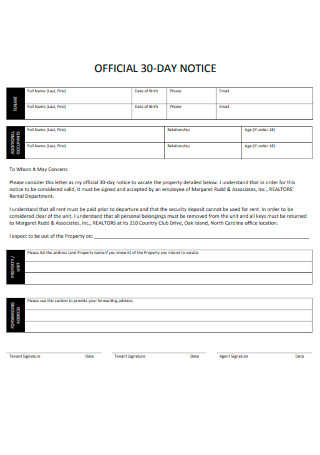
Official 30 Day Notice
download now -

14 to 30 Day Notice
download now -
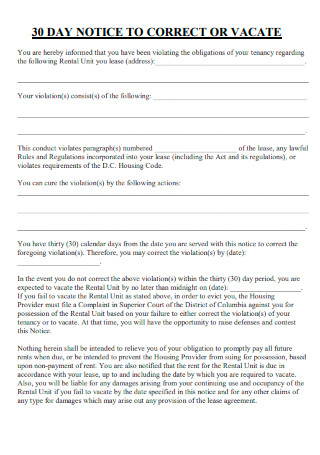
30 Day Notice to Correct or Vacate
download now -
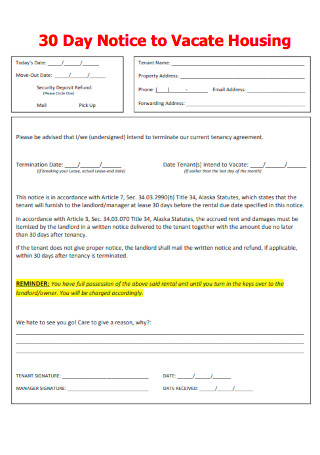
30 Day Notice to Vacate Housing
download now -
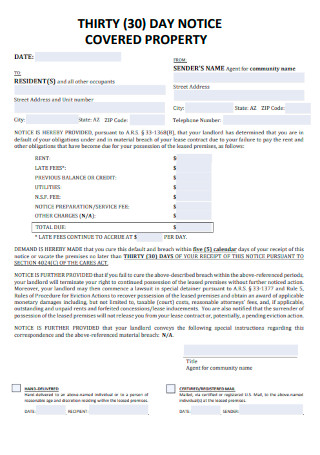
30 Day Notice Covered Property
download now -
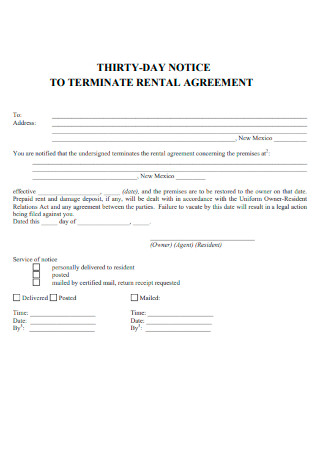
Thirty Day Notice to Terminate Rental Agreement
download now -
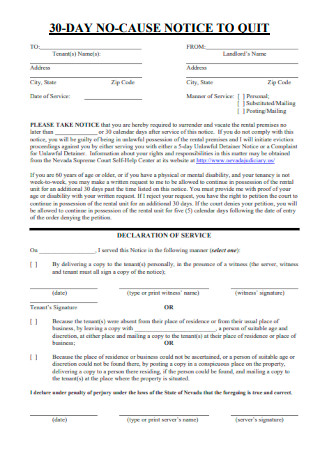
30 Day No Cause Notice to Quit
download now -
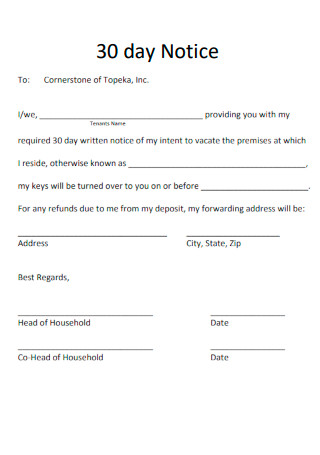
Sample 30 Day Notice
download now -
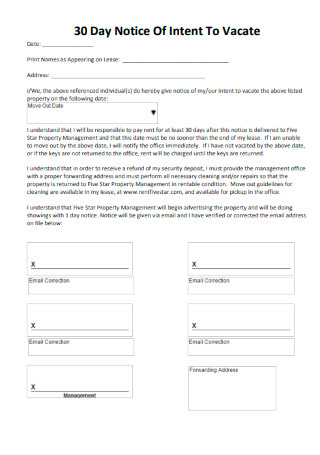
30 Day Notice of Intent to Vacate
download now -
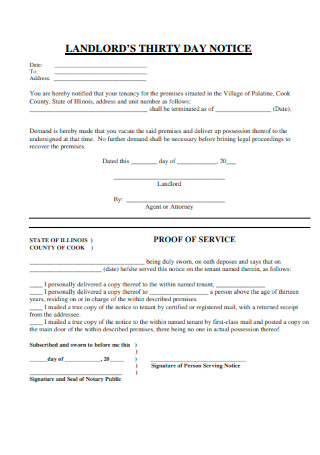
Landlords Thirty Day Notice
download now -
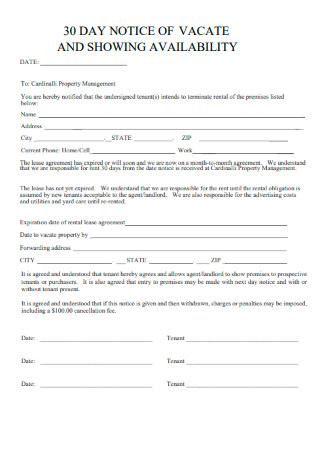
30 Day Notice of Vacate and Showing Availability
download now -
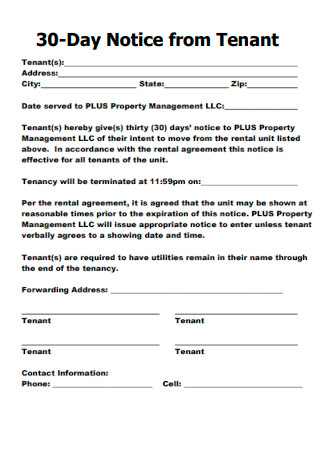
30 Day Notice from Tenant
download now -
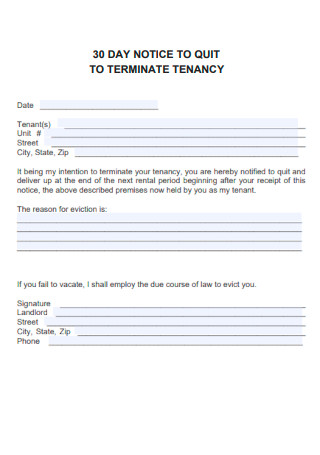
30 Day Notice to Quit to Terminate Tenancy
download now -
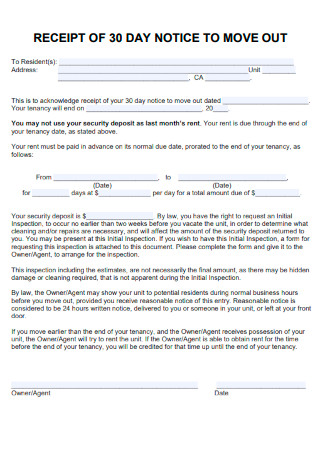
Receipt of 30 Day Notice to Move Out
download now -
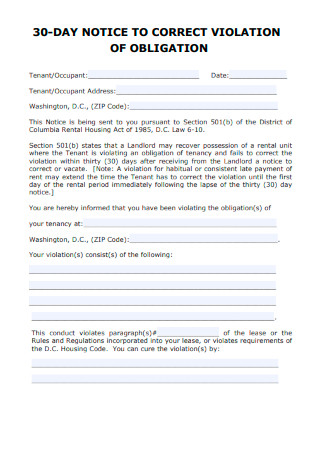
30 Day Notice to Correct Violation Obligation
download now -
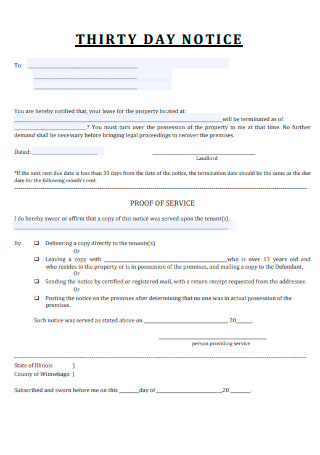
Printable Thirty Day Notice
download now -
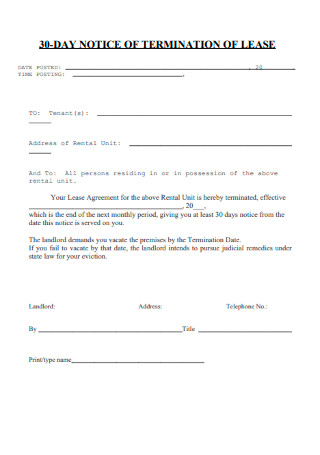
30 Day Notice of Termination of Lease
download now -
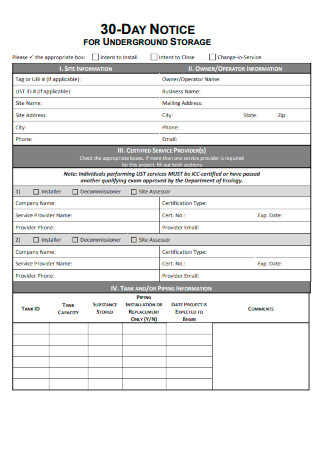
30 Day Notice for Underground Storage
download now -
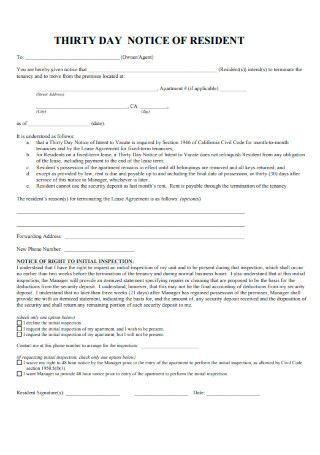
Thirty Day Notice of Resident
download now
FREE 30 Day Notice s to Download
20+ SAMPLE 30 Day Notice
What Is a 30-Day Notice?
What Should You Do Within the 30-Day Timeframe?
Who Can Issue a 30-Day Notice?
How to Create a 30-Day Notice
FAQs
How do you put in a 30 day notice?
How does 30 days notice work in California?
Does a tenant have to give a 30 day notice in California?
What Is a 30-Day Notice?
A 30 Day Notice is a formal notice issued to an individual as a reminder or announcement regarding a deadline or other pending requirements. The notice is most often used within the context of employee resignation and landlord-tenant relations.
According to an article by Nolo, a majority of states in the United States require a 30-day notice to either terminate or change a tenancy. However, a few exceptions apply. North Carolina requires only 7-day notice, while the state of Delaware requires 60-days notice.
What Should You Do Within the 30-Day Timeframe?
As mentioned above, a 30-day notice can have different objectives. But typically, it is mostly applied in situations where tenancy and resignation are involved. So what does one do when they are issued a 30-day notice? The following examples below describe some of the primary and common responses to receiving a notice.
Who Can Issue a 30-Day Notice?
A 30-day notice can have different intentions or objectives. This means that anyone with a valid reason and intention can issue the notice. Individuals and agencies alike can craft the notice. The following are just some common examples of people who are in the position to write one.
How to Create a 30-Day Notice
To create a 30-day notice, you need to ensure your motives are valid and sincere. And if you are looking for easy and editable sample notices to use as reference, browse the wide collection of free templates above to customize your own notice. Simply choose one that meets your needs and follow the basic steps below.
Step 1: Recipient Information
The first step in creating a formal notice is stating the recipient’s basic details. A notice usually comes in a letter or memo format. You have to formally address the tenant, manager, or whoever the letter notice concerns. There are different ways you can begin your letter. You can address the recipient with basic salutations and titles. But it is best to keep it simple and standard. Just be sure to make it clear who the notice is for. Include the complete name and address (for tenants or lessees). Lastly, make sure to indicate the date as well.
Step 2: Reasons
Once you have covered the recipient’s basic details, the next step is the introductory section of your notice. There is no need to beat around the bush. A 30-day notice should be direct, concise and frank. The first few lines of your notice should be able to state clear reasons or adequately explain why the receipt was issued the letter. In other words, this section is basically a straightforward declaration or announcement informing the recipient of the current situation. If there is more than one reason, you can enumerate these in bullet points for a more organized and presentable notice.
Step 3: Terms and Conditions
After you have made clear your reasons and explanation, the next step is to outline the terms and conditions, if applicable. Depending on the objective of your 30-day notice, there may be several or just a few provisions. What’s important is that you use specific details when identifying and enumerating the terms. For example, describe the consequences and enumerate them individually. Be firm with your deadlines and make it clear to the tenant that you will not tolerate any more blunders. If you are issuing a final notice and your previous warnings were not taken seriously, you must be able to draw the line and make a solid stand.
Step 4: Reassurance
The last step is to reassure the recipient that you are open to answering their queries, should they have any. As a closing statement, be sure to reiterate in a professional and direct way that they can contact you for any concerns, clarifications and questions regarding the 30-day notice. Leave your contact details such as landline number, mobile number and email address; and make sure to leave your lines open in case they do try to reach out. Despite the stern tone of a 30-day notice, it is still important that you offer assistance in any way you can if that would help resolve the issue. Finally, make sure to authorize the notice properly by affixing your signature.
FAQs
How do you put in a 30 day notice?
To put in a 30-day notice, you need to have a plan prepared. Make sure to include the date and key details about your departure. Refer to the tutorial guide above for more detailed instructions on how to craft a 30-day notice.
How does 30 days notice work in California?
According to Marinaccio Law, a landlord in California must file either a 60 or 30-day notice to vacate before they can implement an eviction against a tenant.
Does a tenant have to give a 30 day notice in California?
With regard to tenant laws and rights, it may vary from state to state. Thus, it is best to check with your local authorities or the civil code in your state if you are unsure. Alternatively, you can consult a legal expert as well.
Whether you are a landlord dealing with a difficult tenant or an employee planning to move on to the next career opportunity, a 30-day notice must always be sound and well-written. Browse the extensive collection of sample templates above to create and customize your own notice today!
